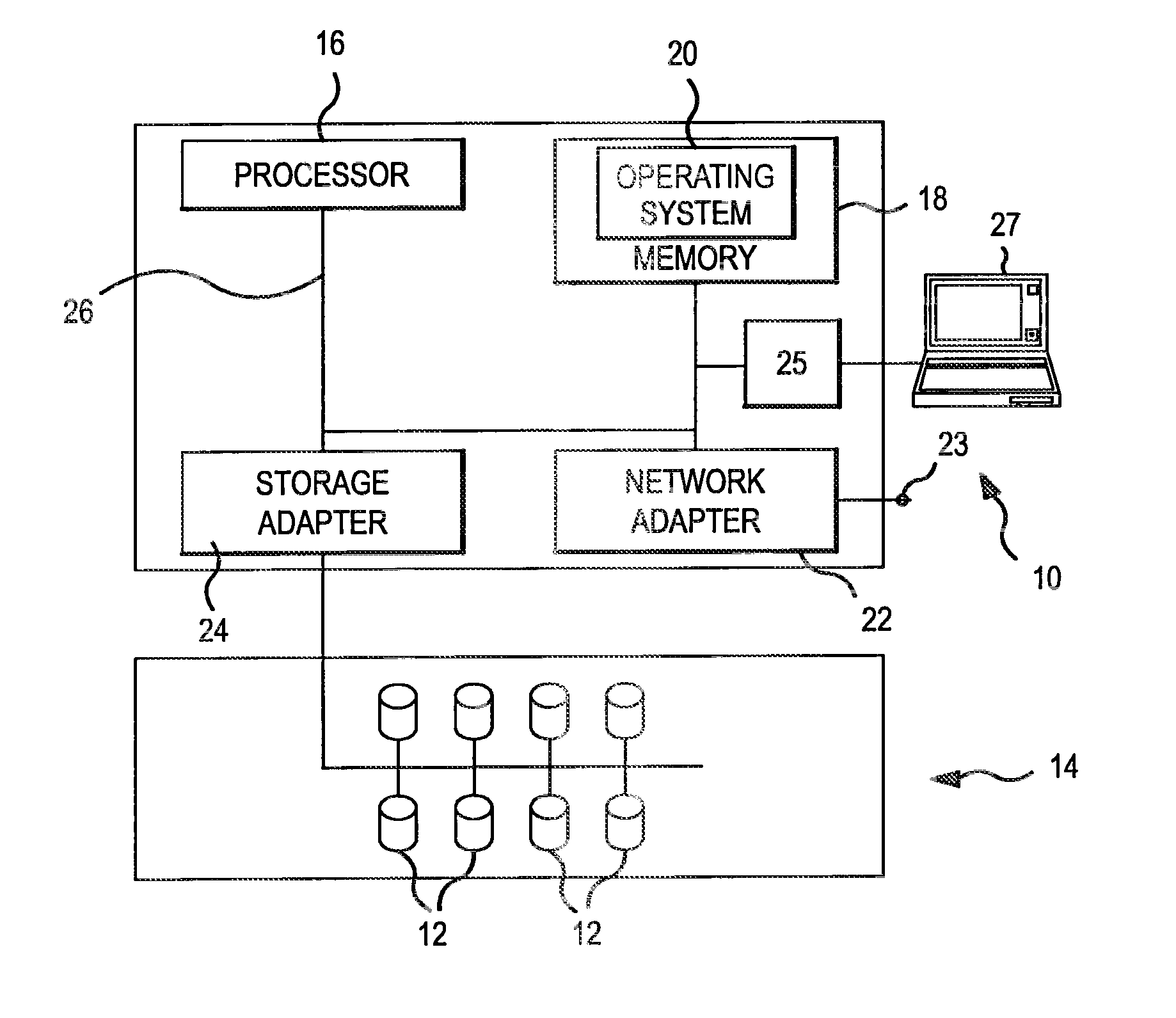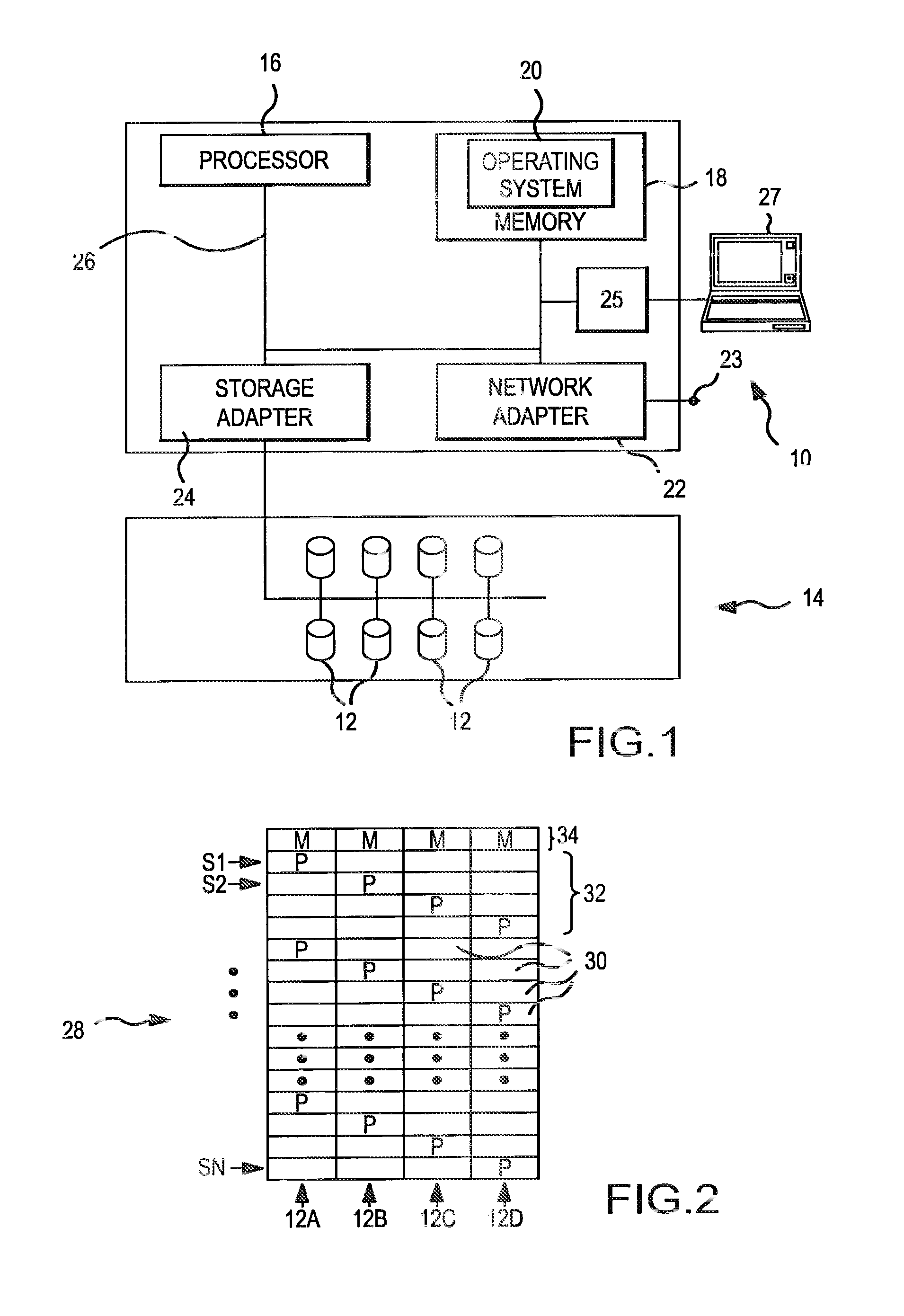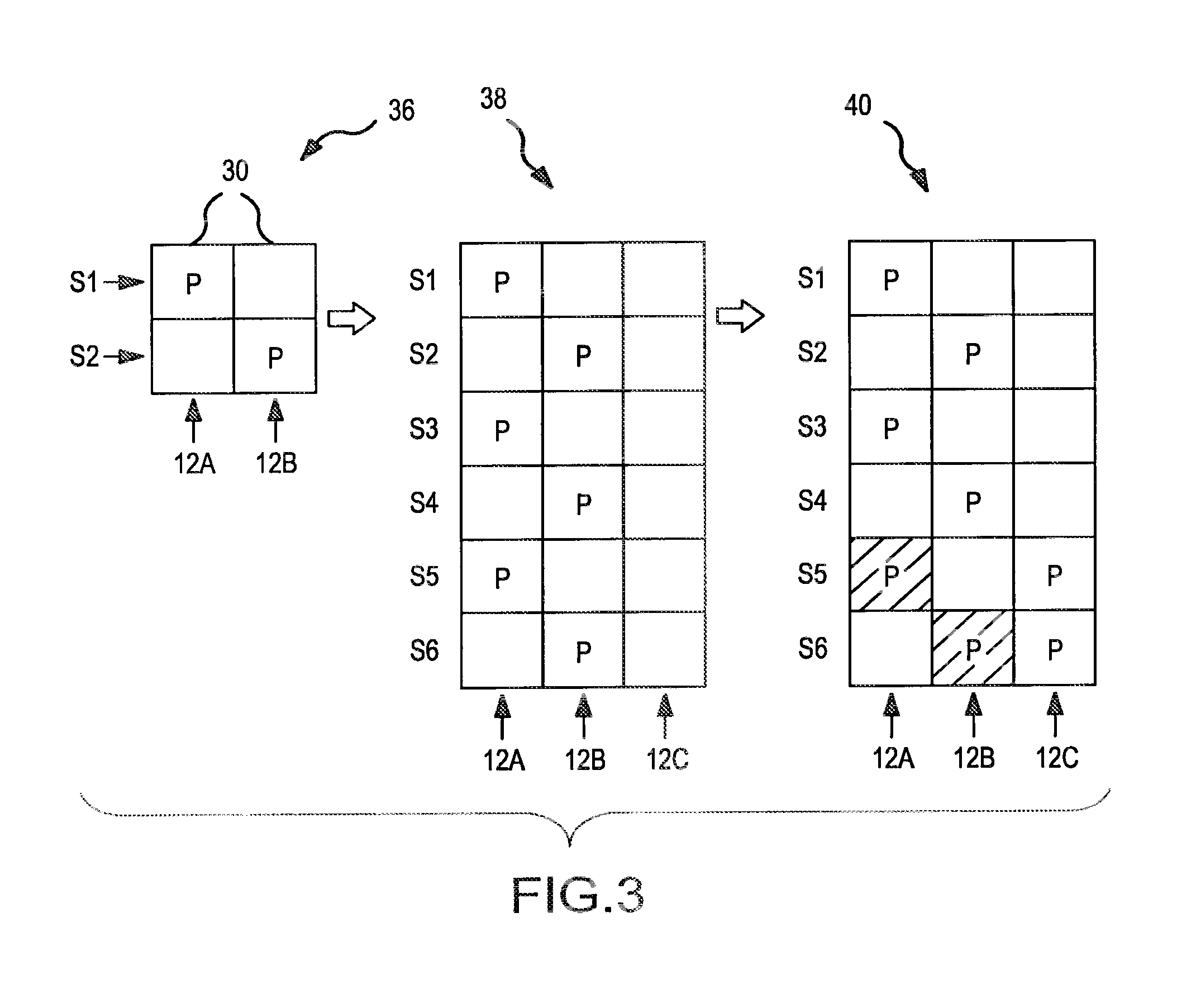Dynamic load balancing of distributed parity in a raid array
a distributed parity and raid array technology, applied in the field of distributed parity disk arrays and data storage computers, can solve the problems of loss of access to data on the disk, parity disk becoming a performance bottleneck, and the allocating of new raid arrays to accommodate increasing data storage requirements is typically less than ideal, so as to achieve the effect of disrupting the assignment of parity blocks
- Summary
- Abstract
- Description
- Claims
- Application Information
AI Technical Summary
Benefits of technology
Problems solved by technology
Method used
Image
Examples
Embodiment Construction
[0026]The present invention involves the use of a parity pattern which defines a repeated distribution of parity blocks within a distributed parity disk array (UDPDA″). The parity pattern is a logical construct that may be stored within a memory or other data storage medium as a data structure, such as an array, containing information that identifies or facilitates identification of the blocks within a stripe of the DPDA which are designated as parity blocks. The parity pattern is modified when a new disk is added to the DPDA, resulting in a new parity pattern for use with the DPDA. The parity blocks within the DPDA are redistributed by transferring a minimal number of parity blocks within the DPDA to the new disk in accordance with the new parity pattern resulting in an even distribution of parity blocks throughout the DPDA. The parity blocks in DPDA's having dual or higher order parity are redistributed without the possibility of inadvertently selecting two parity blocks within th...
PUM
 Login to View More
Login to View More Abstract
Description
Claims
Application Information
 Login to View More
Login to View More - R&D
- Intellectual Property
- Life Sciences
- Materials
- Tech Scout
- Unparalleled Data Quality
- Higher Quality Content
- 60% Fewer Hallucinations
Browse by: Latest US Patents, China's latest patents, Technical Efficacy Thesaurus, Application Domain, Technology Topic, Popular Technical Reports.
© 2025 PatSnap. All rights reserved.Legal|Privacy policy|Modern Slavery Act Transparency Statement|Sitemap|About US| Contact US: help@patsnap.com



